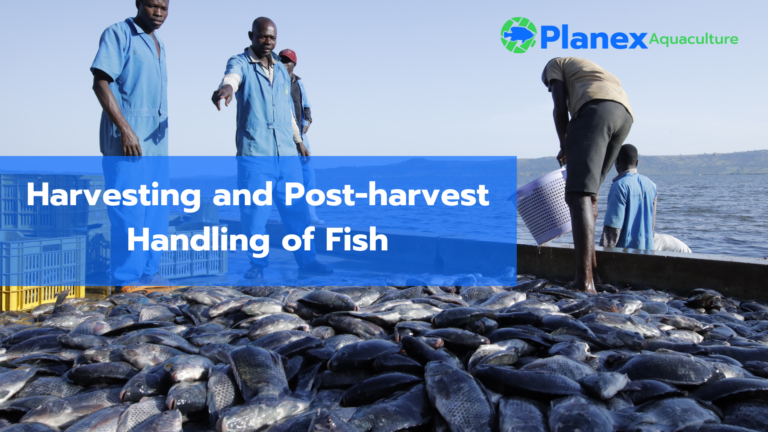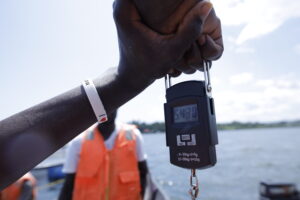Fish farming is a delicate art that combines aquaculture with savvy business practices. The final steps in this process, harvesting, and post-harvest handling are crucial for ensuring the quality, safety, and profitability of fish products. This article delves into the best practices for these critical stages, which can make or break the success of a fish farm.
Why it matters!
Importance of proper harvesting and post-harvest handling in fish farming
Harvesting and post-harvest handling are the last processes in fish farming, which are crucial for ensuring the quality, safety, and profitability of the fish product. The importance of proper harvesting and post-harvest handling in fish farming cannot be overstated, as these practices are pivotal in ensuring the sustainability and economic viability of the aquaculture industry. Harvesting fish at the optimal size is critical for maximizing profits; it is a delicate balance where waiting too long can lead to a decrease in growth rate and an increase in feeding costs, ultimately reducing profitability. Moreover, the timing of the harvest can be strategically aligned with high market demands, such as during festive seasons, to capitalize on higher profit margins. (1)
Impact on quality and profitability of the fish products
Following these practices will boost your profits and help feed the world responsibly and sustainably.
- Handling Impact: The way fish are handled post-harvest affects their quality; poor handling leads to stress, damage, spoilage, and lower market value.
- Temperature Factor: In warm climates, like East Africa, high temperatures can speed up bacterial growth and spoilage, making rapid chilling and gentle handling crucial.
- Ethical Handling: Humane treatment of fish aligns with ethics, improves their welfare, and positively affects their growth and health.
- Slaughtering Techniques: Proper slaughtering methods reduce suffering and enhance fish meat quality.
- Beyond Profit: Good harvesting and post-harvest practices ensure food safety, support sustainable livelihoods and contribute to the aquaculture sector’s resilience and long-term success.
Effects of fish harvest and post-harvest handling on fish quality and profitability
Harvesting and post-harvest handling are critical stages in the fish supply chain that significantly affect the quality and profitability of fish products. Here is how:
Quality Effect:
- Freshness: The methods used during harvesting and how quickly the fish are processed after capture can preserve the freshness and extend the shelf life of fish products.
- Texture and Color: Stressful handling can lead to a deterioration in the texture and color of fish, which are important quality attributes for consumers.
- Spoilage: Improper handling can accelerate spoilage due to the activation of enzymes and the growth of microbes, leading to a lower-quality product.
Profitability Impact:
- Market Value: High-quality fish products fetch higher prices in the market. Therefore, good harvesting and handling practices can increase profitability.
- Waste Reduction: Efficient post-harvest handling reduces losses from spoilage and damage, ensuring more of the catch reaches the consumer, enhancing profitability.
- Consumer Trust: Consistently providing high-quality fish strengthens consumer trust and can lead to increased demand and loyalty, positively impacting profitability.
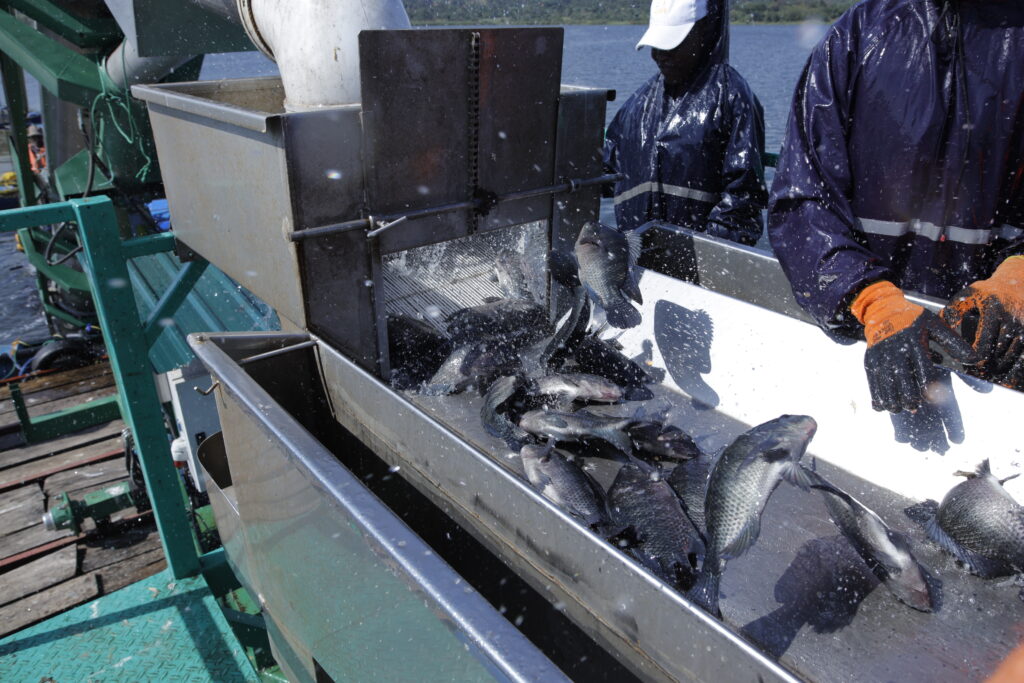
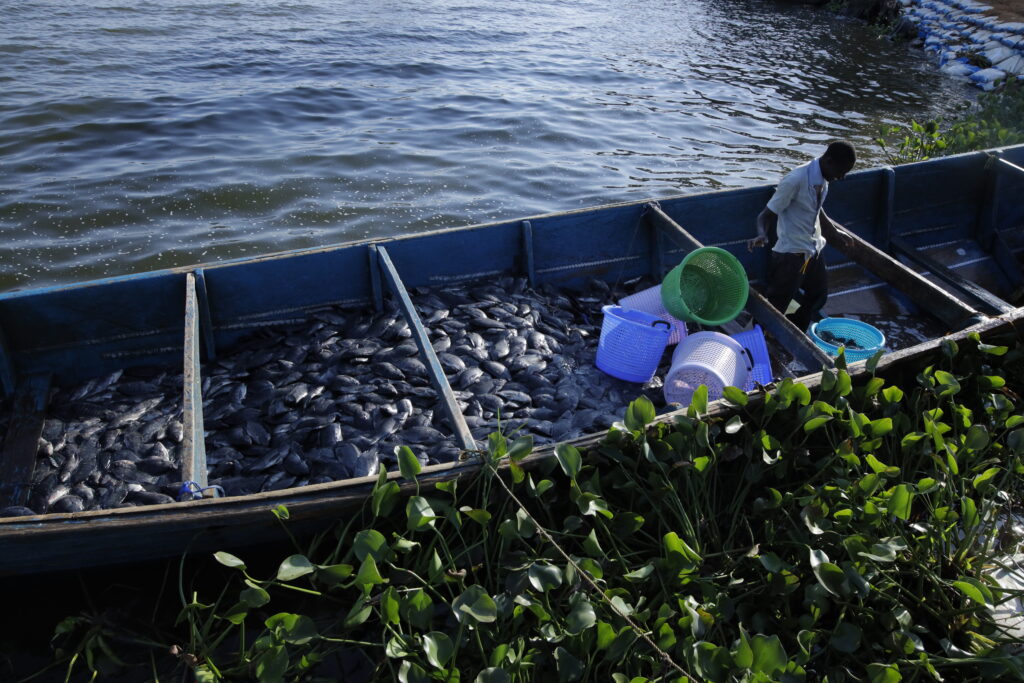
Harvesting fish
The process of harvesting fish is a critical phase that marks the completion of the cycle of breeding, feeding, and growing aquatic animals to maturity. This activity should be carefully planned and executed to ensure the highest quality and quantity of yield. Considering that harvesting is one of the most labor-intensive activities of aquaculture, second only to farm construction, a great deal of effort has been invested in mechanization of the process. The goal is to streamline the harvesting process to reduce the labor required and increase overall efficiency. The methods used for harvesting are influenced by various factors, including the type of culture system in place, the species being cultivated, and the intended market form of the product.
When To Harvest
Fish are normally harvested for; -Sale, or -Transfer. Deciding the right time to harvest fish is a complex process influenced by multiple factors that ensure the quality and economic viability of the fish product. Here are some of the key considerations:
- Fish Size and Maturity: The size and maturity of the fish are crucial, as they must meet market size requirements and consumer preferences for specific fish species.
- Market Demand: Market demand influences harvesting time. Harvesting should align with the highest market demand to ensure the best prices and reduce the need for storage.
- Fish Health: The health of the fish at the time of harvest can significantly impact the quality of the final product. Healthy fish, free from disease and stress, will result in a better-quality product1.
- Resource Availability: Availability of resources such as labor and equipment can also dictate the timing of the harvest, especially in larger operations.
These factors are interrelated and must be carefully balanced to optimize both the quality of the fish and the profitability of the harvest. Understanding and managing these aspects can lead to a more successful and sustainable fish farming operation.
Harvesting in ponds
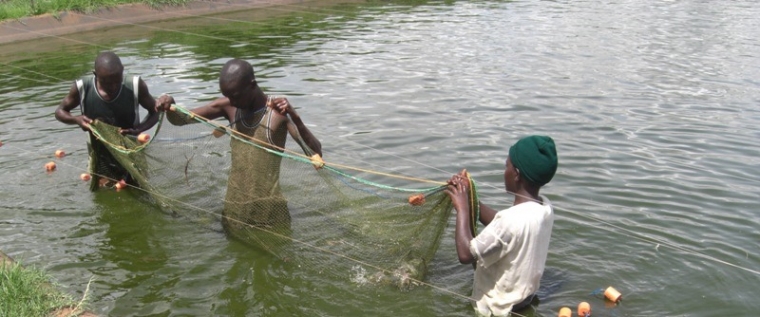
Harvesting fish from a pond is a critical process that requires careful planning and execution to ensure the health of the fish and the efficiency of the operation. Well-designed fish ponds typically feature specialized provisions that facilitate proper draining and harvesting. These may include a harvesting basin or similar features that allow for the safe and efficient collection of fish, particularly in nursery or fry-rearing ponds where the well-being of young fish is paramount.
The presence of a harvesting sump simplifies the process of pond drainage significantly. The rate of drainage is carefully managed to correspond with the size of the outlet and drainage channels, ensuring that the fish are directed toward the sump. Once concentrated, the fish can be collected using loading equipment like buckets and nets as needed. However, if the volume of fish exceeds the capacity of the sump, a combination of seining and draining may be necessary to ensure the fish are harvested in good condition.
The final stage of harvesting involves handling the fish with care, especially when they are destined for live fish markets. To prevent stress and mortality, it is advisable to refresh the water in the sump with sprays of fresh water. This practice helps maintain the vitality of the fish during the harvesting process, ensuring they reach the market in optimal condition. By adopting these methods, aquaculture farms can achieve successful harvests that meet market demands while safeguarding the health of their fish stock.
Harvesting in cages
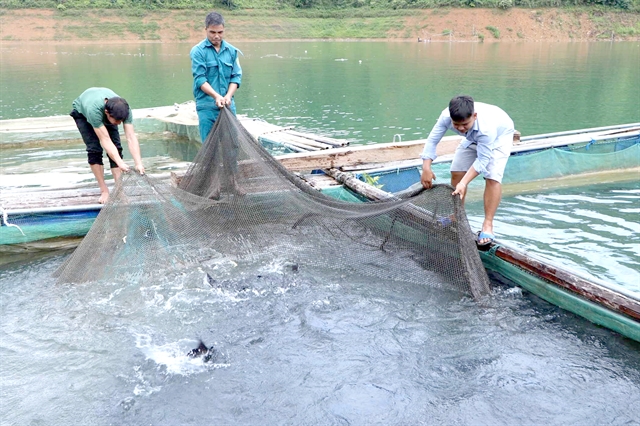
Harvesting fish from cage farms requires careful consideration of the farm’s layout and the size of the cages. Unlike tank and raceway farms, where draining the water and scooping out the fish is relatively straightforward, cage farms may have distinct challenges. For small cages, direct lifting may be feasible, but larger cages often necessitate towing to the shore or the use of boats if towing is not an option. The presence of walkways around cage frames can facilitate the process, allowing nets to be raised and the fish to be removed more easily.
Harvesting fish from cage farms requires careful consideration of the farm’s layout and the size of the cages. Unlike tank and raceway farms, where draining the water and scooping out the fish is relatively straightforward, cage farms may have distinct challenges. For small cages, direct lifting may be feasible, but larger cages often necessitate towing to the shore or the use of boats if towing is not an option. The presence of walkways around cage frames can facilitate the process, allowing nets to be raised and the fish to be removed more easily.
The method of harvesting also varies depending on the farm’s infrastructure and the scale of operation. Some farmers opt for traditional methods like seines to concentrate the fish, while others may employ pumps to transfer large quantities of fish to the loading area. This is specifically common in expansive operations where manual harvesting would be too time-consuming and labor-intensive.
Post-harvest handling
Post-harvest handling of fish is a vital process that significantly affects the quality and value of produced fish. It involves all activities that occur after fish are removed from the pond, cage, or tank, and before they are marketed for human consumption. Proper handling is essential to minimize food loss and waste (FLW), ensure fish quality, and guarantee consumer satisfaction. The key aspects of post-harvest handling include:
1. Cleaning and sorting
This includes washing the fish to remove mud, dirt, and contaminants, and sorting them based on size, species, and quality. Proper handling during this stage is crucial to reduce the bacterial load and prevent physical damage that can lead to bruising and spoilage of the fish flesh.
2. Chilling and storage
Fish must be chilled immediately after cleaning to slow down bacterial growth and maintain quality. The most common methods of chilling fish are; the use of ice or refrigerated systems, and it ensures that the fish are stored at the correct temperature to prevent spoilage and extend shelf life. Delays in chilling can lead to significant quality deterioration and loss of value in the market.
3. Transportation and marketing
After harvesting, fish are either sold at the farm or transported to markets or processing facilities. The transportation method must maintain the cold chain to keep the fish at the right temperature. The entire post-harvest process must be managed efficiently to reduce food loss and waste, ensuring that the fish reach final consumers in the best possible condition.
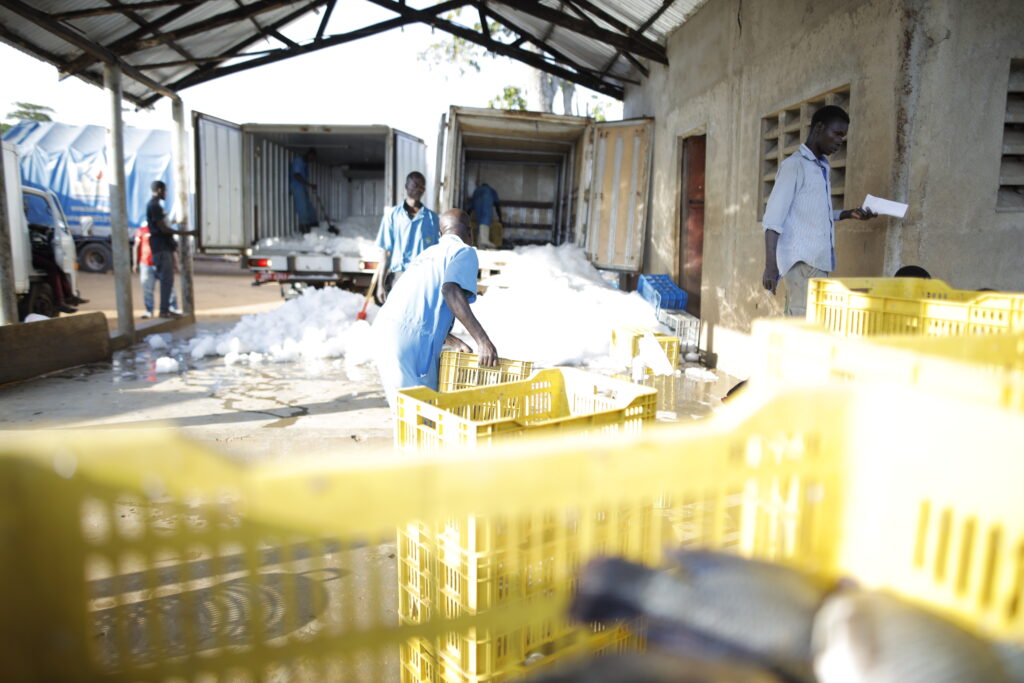
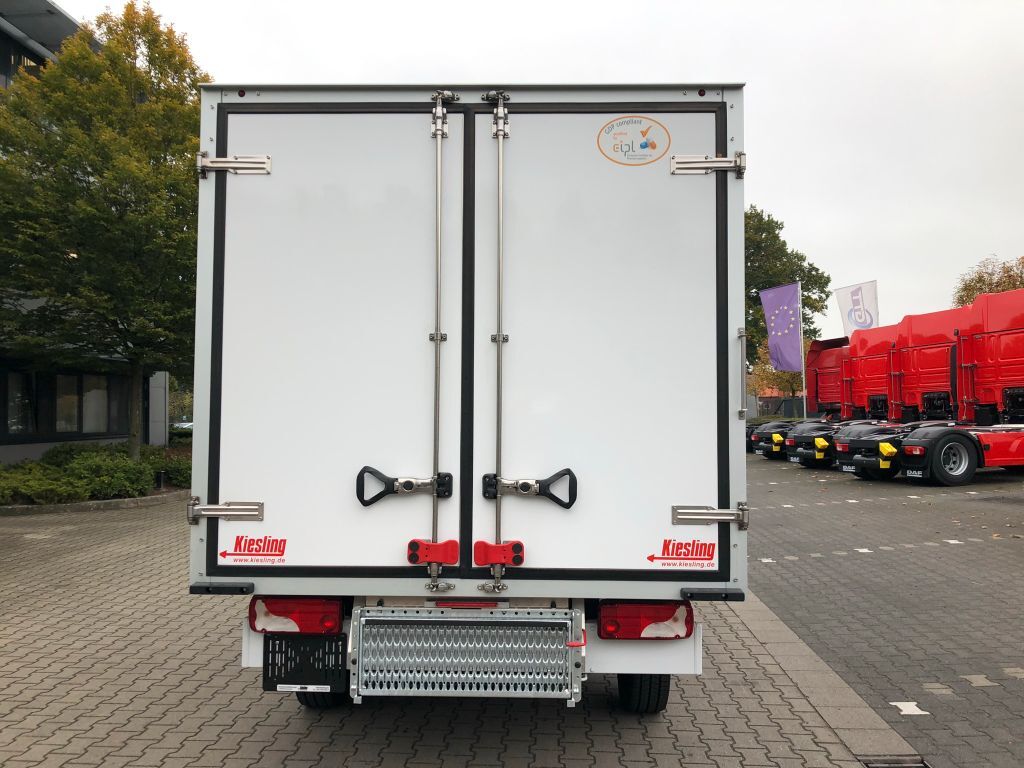
After harvesting, fish are either sold at the farm or transported to markets or processing facilities. The transportation method must maintain the cold chain to keep the fish at the right temperature. The entire post-harvest process must be managed efficiently to reduce food loss and waste, ensuring that the fish reach final consumers in the best possible condition.
Let’s champion responsible aquaculture by training fish handlers, researching welfare-friendly methods, and embracing sustainable practices. Whether you’re a fish farmer, consumer, or industry enthusiast, your commitment to conscientious harvesting and post-harvest handling has a significant impact. Together, we can ensure that every fish value chain, from farm to table upholds the highest standards of care and quality.

